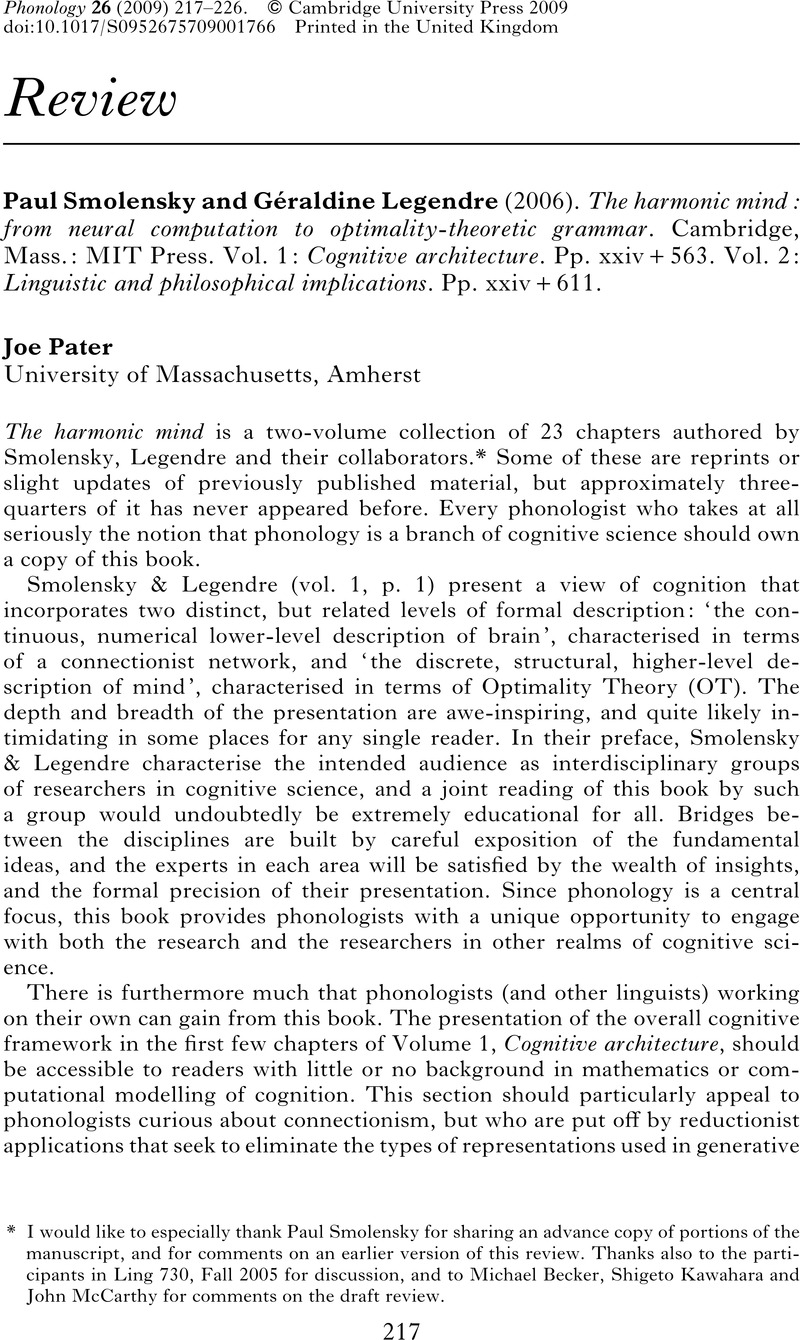Crossref Citations
This article has been cited by the following publications. This list is generated based on data provided by Crossref.
Potts, Christopher
Pater, Joe
Jesney, Karen
Bhatt, Rajesh
and
Becker, Michael
2010.
Harmonic Grammar with linear programming: from linear systems to linguistic typology.
Phonology,
Vol. 27,
Issue. 1,
p.
77.
Jarosz, Gaja
2013.
Learning with hidden structure in Optimality Theory and Harmonic Grammar: beyond Robust Interpretive Parsing.
Phonology,
Vol. 30,
Issue. 1,
p.
27.
Ryan, Kevin
2017.
Attenuated Spreading in Sanskrit Retroflex Harmony.
Linguistic Inquiry,
Vol. 48,
Issue. 2,
p.
299.
Breiss, Canaan
and
Albright, Adam
2022.
Cumulative markedness effects and (non-)linearity in phonotactics.
Glossa: a journal of general linguistics,
Vol. 7,
Issue. 1,


